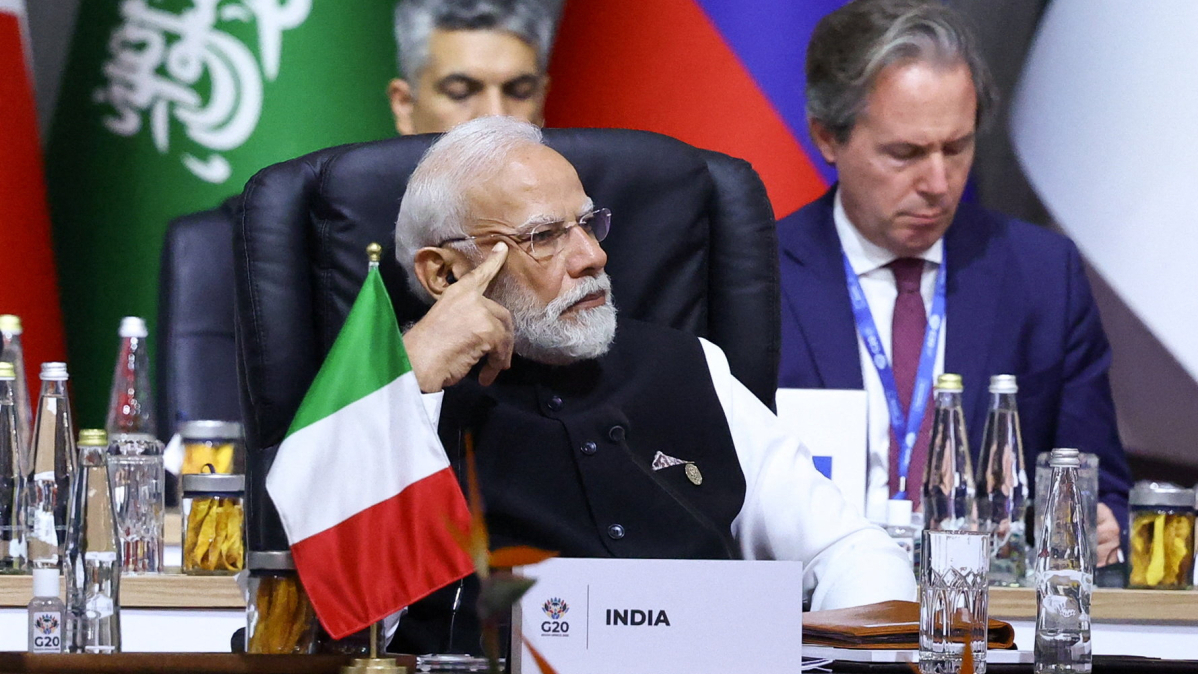Wall Street ends week lower as tech shares retreat
U.S. stock markets closed lower at the end of the week, as investors continued to rotate out of technology shares, putting pressure on major indices....

Canada and India have agreed to restart negotiations for a new trade deal, Indian officials confirmed on Sunday, after talks stalled following a diplomatic spat two years ago.
The announcement came after a bilateral meeting between Canadian Prime Minister Mark Carney and Indian Prime Minister Narendra Modi on the sidelines of the G20 summit in Johannesburg, South Africa.
“The leaders agreed to begin negotiations on a high-ambition Comprehensive Economic Partnership Agreement (CEPA), aimed at doubling bilateral trade to $50 billion by 2030,” said a statement from India’s Prime Minister’s Office.
On X, Prime Minister Carney added, “India is the world’s fifth-largest economy, and that means big new opportunities for Canadian workers and businesses. We launched negotiations for a trade deal that could more than double our trade to more than C$70 billion.”
Both countries also reaffirmed longstanding civil nuclear cooperation and noted ongoing discussions to expand collaboration, including through long-term uranium supply arrangements.
The restart of trade talks signals a thaw in relations after Canada paused negotiations in 2023, following accusations that India was involved in the killing of a Canadian Sikh separatist — allegations New Delhi denied. Despite the diplomatic row, trade between Canada and India continued to grow, though experts note it remains small relative to India’s economy.
In 2024, two-way goods and services trade reached about C$31 billion ($21.98 billion), largely favouring Canada due to C$16 billion in services exports. By comparison, Canada’s trade with China was nearly four times larger.
Carney emphasised the need to diversify Canada’s trade beyond the U.S., its largest trading partner, vowing to double Canada’s non-U.S. exports over the next decade.
“What we're looking to do is to put that commercial relationship on a sound footing through a potential trade agreement,” he said, noting that it would include business protections, clear rules, and dispute mechanisms.
During the summit, Carney also met with Brazilian President Luiz Inácio Lula da Silva, and the two leaders agreed to intensify negotiations on a Canada-Mercosur free trade agreement. Mercosur includes Brazil, Argentina, Paraguay, and Uruguay.
The Oligarch’s Design is an investigative documentary exploring how financial power, political influence and carefully constructed narratives can shape conflict and public perception.
Japan has lifted a tsunami advisory issued after an earthquake with a magnitude of 6.9 hit the country's northeastern region on Friday (12 December), the Japan Meteorological Agency (JMA) said. The JMA had earlier put the earthquake's preliminary magnitude at 6.7.
Turkish President Recep Tayyip Erdoğan reiterated his offer to host Ukraine-Russia peace talks in Ankara, at his meeting with Russian President Vladimir Putin. The talks took place on the sidelines of the international Forum for Peace and Trust in Ashgabat, Turkmenistan, on Friday (12 December).
The United States issued new sanctions targeting Venezuela on Thursday, imposing curbs on three nephews of President Nicolas Maduro's wife, as well as six crude oil tankers and shipping companies linked to them, as Washington ramps up pressure on Caracas.
The resignation of Bulgaria's government on Thursday (11 December) puts an end to an increasingly unpopular coalition but is likely to usher in a period of prolonged political instability on the eve of the Black Sea nation's entry into the euro zone.
Thailand’s caretaker Prime Minister Anutin Charnvirakul said on Saturday that Thai forces would continue military action along the Cambodia border until Bangkok believes there is no longer a threat to Thai territory or civilians.
U.S. stock markets closed lower at the end of the week, as investors continued to rotate out of technology shares, putting pressure on major indices.
EU foreign policy chief Kaja Kallas has warned that without concrete concessions from Russia, such as limiting its military forces or curbing its defence budget, new conflicts could erupt elsewhere, even if Ukraine receives security guarantees.
Multiple people were shot on Saturday at Brown University in Providence, Rhode Island, prompting an active shooter alert and a campus lockdown, city officials said.
The latest round of clashes between Thailand and Cambodia has left 15 Thai soldiers dead and 270 others injured, Thailand’s Ministry of Defence spokesman Surasant Kongsiri said at a press conference on Saturday.
You can download the AnewZ application from Play Store and the App Store.

What is your opinion on this topic?
Leave the first comment